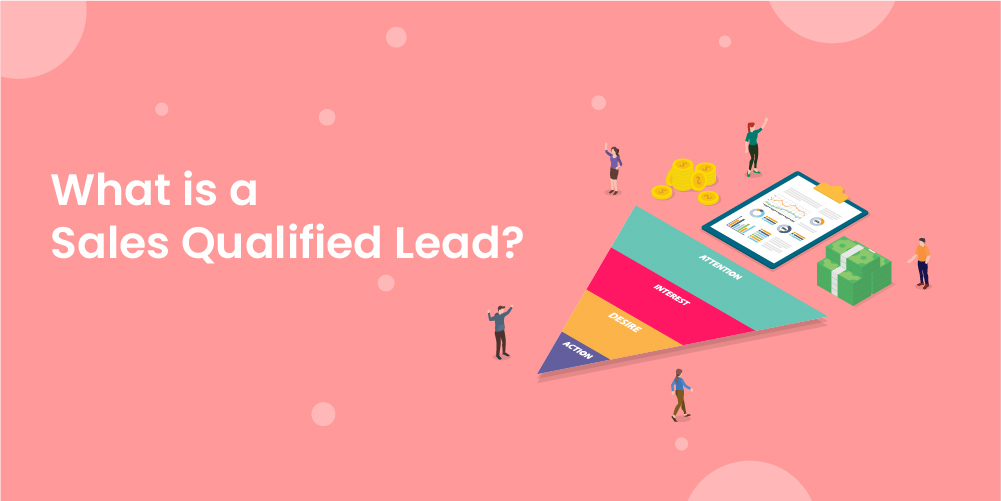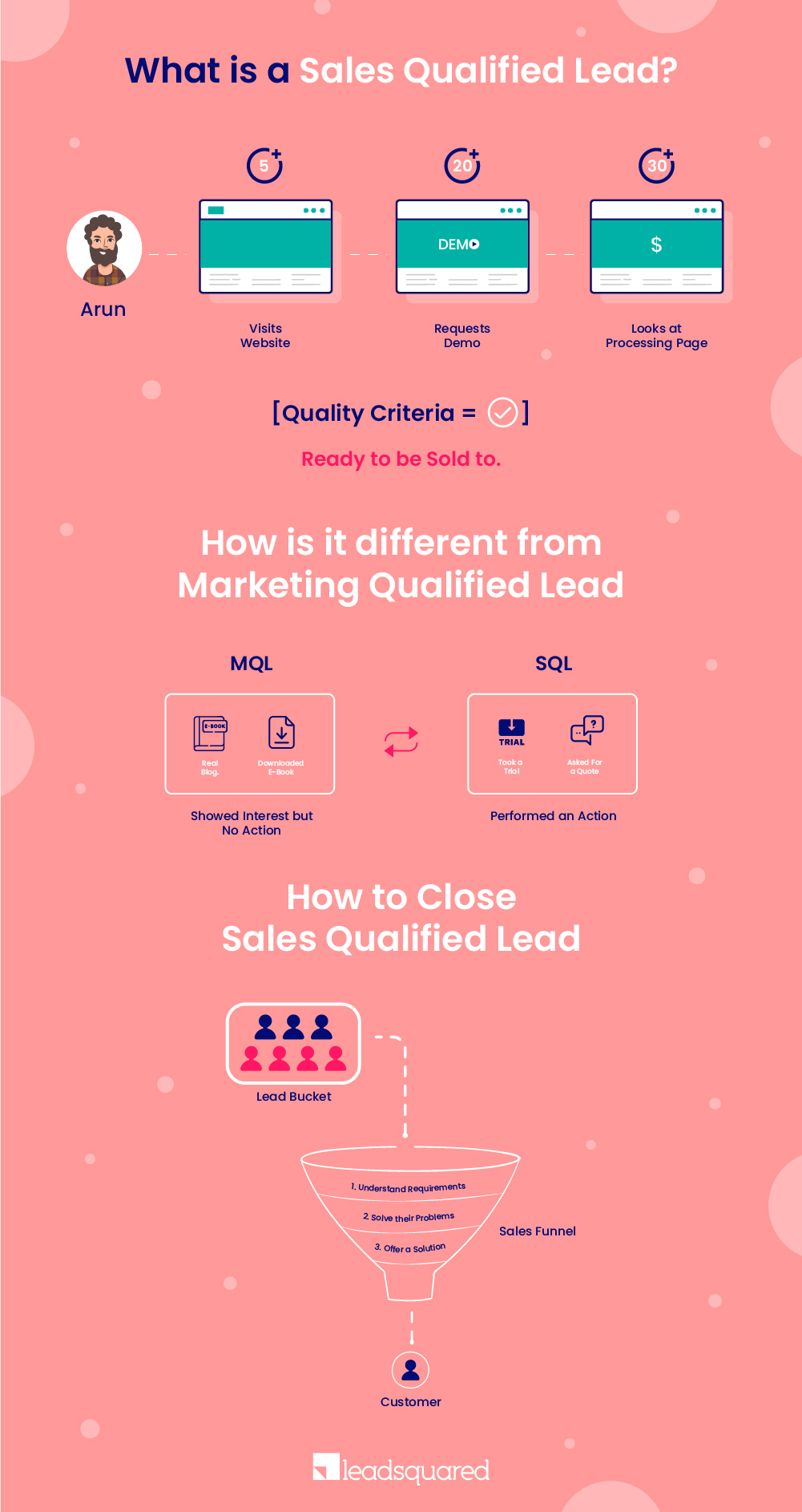Lead generation has been touted as one of the hardest parts of sales, but it’s absolutely essential to find quality leads that will keep your sales funnel full and humming.

The question is: what should you do once you get those leads?
Sales organizations need leads so they can start the process of nurturing and connecting with prospects. But what you may not have realized is that not all leads are created equal, and therefore shouldn’t be treated as such.
Leads can be sorted into two different buckets: sales qualified leads and marketing qualified leads. However, one study by MarketingSherpa has found that 61% of B2B sales organizations send all their marketing leads to sales, even though only 27% of those leads may be qualified.
When companies make the mistake of dumping all of their leads into a single bucket and start trying to sell to them immediately, they end up burning through a ton of leads (and time) that never amount to sales.
Here’s our best practice: know the difference between sales qualified and marketing qualified leads and treat them accordingly.
So, what is a sales qualified lead?
By definition, a sales qualified lead is a prospective customer who has shown genuine interest in buying your product or service and is ready to move to the next stage in your sales funnel.

Here’s an example: someone visits your website and requests a demo of your product, looks at a pricing sheet, or compares different service packages you offer. These are clear signals that this person may be ready to make a decision, and sales reps should use this intel to connect with these leads and tip the scales in their favor.
Sales qualified leads can come from a variety of sources, including organic search, proactive outreach, social media, paid ads, or even as they transition from a marketing qualified lead (more on this in a moment) to a sales qualified lead.
How is it different than a marketing qualified lead?
By contrast, marketing qualified leads are those that have shown some degree of interest in your company but are not yet ready to speak with a sales rep. Maybe they signed up for an email newsletter, filled out a form for a free piece of content, read a blog post, or liked your social media page. These triggers indicate that something you offer or something you’ve published has captured their attention, but they’ve made no indication they’re ready to buy.
Instead, your marketing team can continue nurturing these leads with the goal of turning them into sales qualified leads. This is the stage where prospects can raise their hand to ask questions and spark conversations. They’re learning about your product or service through the content you publish, the things you post on social media, and the emails they receive from you.
The biggest difference between the two types of leads is what they’re engaging with, and how.
It’s important to remember this distinction between sales qualified leads and marketing qualified leads to ensure each sales rep is best utilizing their time. Each rep has a limited number of hours that they can connect with prospects and move them through the funnel. If they’re wasting time on leads that aren’t interested in buying, they could be neglecting leads that are genuinely interested in closing.
How should I approach sales qualified leads?
Ideally, you have a lead qualification and scoring process in place that can allow sales and marketing teams to communicate regarding lead status. Marketing should understand what the two types of leads look like and be able to vet and qualify them before they pass to sales reps. A good rule of thumb is to consider the leads that are ready for a conversation rather than just passive engagement.
Once you do receive a sales qualified lead, your goal is to move them through the various stages of your sales funnel until they are ready to buy. To do this effectively, you not only need to understand the definition of a sales qualified lead, but also the specific triggers or behaviors within your sales funnel that will alert you to their progress.
Remember, sales qualified leads are those who are ready for a conversation. If your marketing team has done their job, then the lead has already been deemed a good fit for whatever you sell. They know they could benefit from what you offer, and now it’s a matter of building trust, exploring pricing options and services, and making a decision.
How LeadSquared Can Help
Sales organizations of any size often struggle to manage their leads effectively, especially if you are doing your due diligence in sorting marketing qualified leads and sales qualified leads. If you’re using LeadSquared, this process happens automatically to remove much of the guesswork and manual labor when determining your best options for sales.
LeadSquared’s platform includes lead scoring, lead qualification, and lead distribution features to help sales organizations maximize their time. You can see at a glance where your leads are in the funnel, what makes them sales qualified or marketing qualified, and know where your best chances are at closing the sale.









